
Overview
This article provides compelling examples of competitor analysis strategies that can drive success for direct-to-consumer (DTC) brands. Implementing thorough competitor analysis—through methods such as:
- Benchmarking
- A/B testing
- Utilizing tools like SEMrush and SpyFu
can significantly enhance conversion rates and average order values. This is evidenced by successful case studies of companies that have effectively applied these strategies. By understanding the competitive landscape, DTC brands can position themselves for greater success.
Introduction
In the fiercely competitive landscape of direct-to-consumer (DTC) brands, understanding the intricacies of competitor analysis is paramount. Companies that effectively harness competitor insights can unlock pathways to enhanced profitability and improved market positioning. Yet, with a plethora of tools and strategies at their disposal, how can brands ensure they are leveraging the right approaches to maintain their competitive edge? This article explores nine compelling examples of competitor analysis that highlight successful tactics and methodologies, offering invaluable lessons for DTC brands aiming for success in an ever-evolving marketplace.
Parah Group: Comprehensive Competitor Analysis Services for DTC Brands
Parah Group provides an extensive array of competitors analysis example services meticulously designed for DTC companies. By leveraging data-informed insights alongside principles of consumer psychology, they empower companies to navigate their market landscape with efficiency, understand market positioning, and uncover growth opportunities. Their multifaceted approach encompasses user session recordings, competitor benchmarking, and continuous A/B testing, ensuring that every aspect of a company's strategy is optimized for peak performance. This comprehensive methodology drives significant and elevates average order values, positioning it as an indispensable resource for companies aiming to thrive in a competitive marketplace.
Successful industry examples illustrate that companies implementing rigorous competitors analysis example can achieve extraordinary results. For instance, a $30M apparel company collaborated with Parah Group and experienced a 35% increase in conversion rates and a 10% rise in revenue per visitor after executing strategies such as homepage redesigns, optimized product pricing, and gamified progress bars for free shipping thresholds. Similarly, Grab Green, a $15M revenue cleaning product company, boosted their average order value by 80% through strategic pricing, bundling, and value propositions on larger items. These case studies underscore the pivotal role of competitors analysis example in conversion rate optimization.
Moreover, tools like SEMrush and SimilarWeb are critical for real-time competition analysis, enabling brands to make informed decisions within their competitors analysis example framework. As emphasized by industry leaders, market analysis is foundational for making smarter, data-backed decisions that impact ROAS, CAC, and sustainable growth. Regular updates and ongoing competitors analysis example are essential for maintaining a competitive edge.
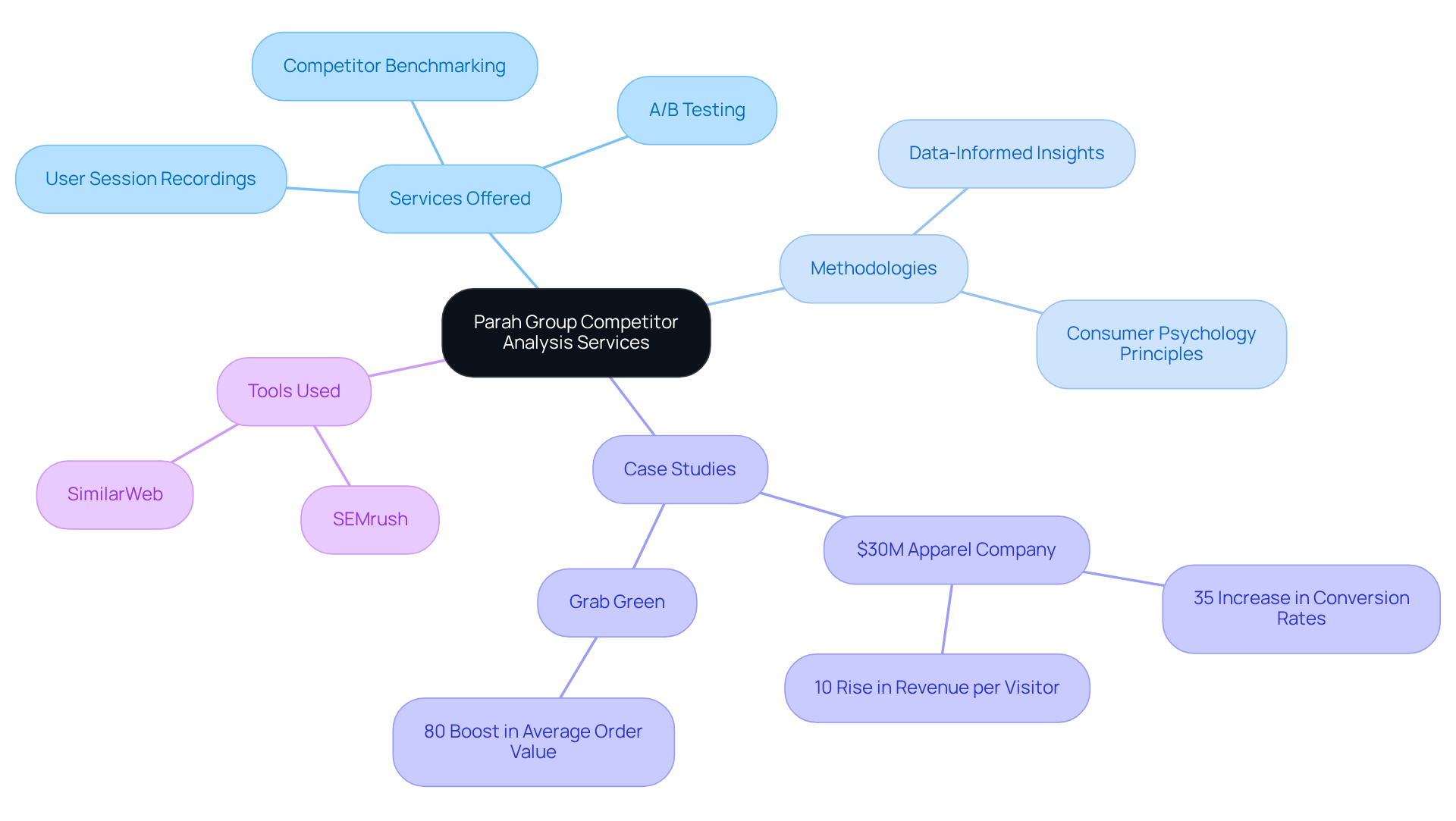
SpyFu: Uncover Competitors' PPC Strategies and Keywords
SpyFu empowers DTC companies by providing a competitors analysis example that allows them to thoroughly analyze their competitors' PPC strategies, revealing the keywords they target and the advertisements they deploy. This tool serves as a competitors analysis example by providing (CPC) and the estimated monthly budget of competitors, allowing companies to adjust their strategies accordingly. By utilizing a competitors analysis example to discern which keywords drive traffic and conversions for their rivals, DTC companies can refine their PPC campaigns to enhance performance and reduce costs.
In addition to tools like SpyFu, DTC companies can draw valuable insights from transformative case studies in Conversion Rate Optimization (CRO), showcasing effective methods for driving revenue growth. For instance:
- Parah Group has successfully aided companies, including a $30M clothing firm, in increasing their conversion rates by 35% through homepage redesigns that prioritize social proof and enhanced pricing strategies.
- A $15M cleaning product brand saw an 80% increase in average order value (AOV) by implementing product bundles and establishing free shipping thresholds.
These examples underscore how innovative CRO strategies can significantly boost profitability and growth for DTC companies.
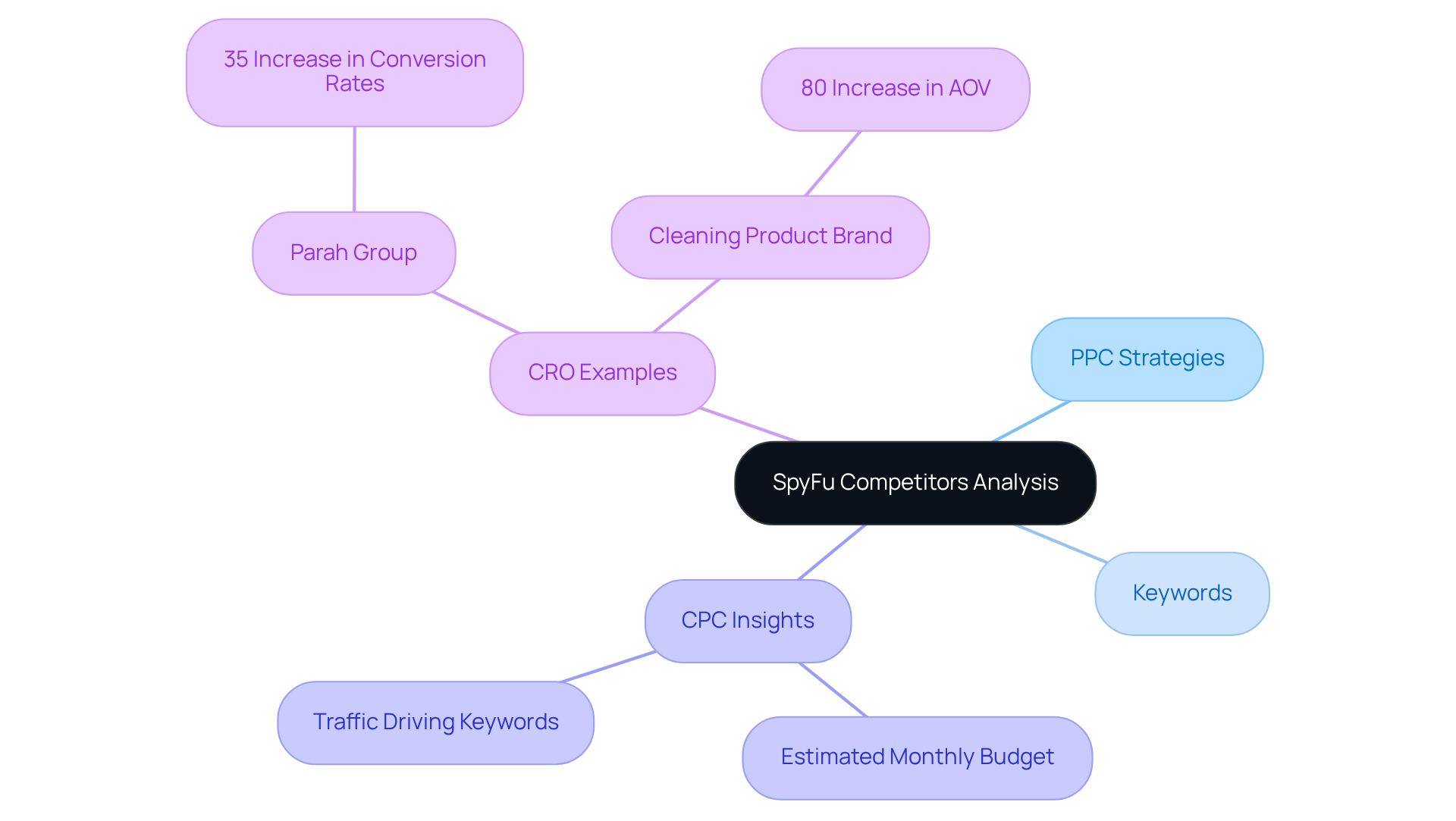
Semrush: All-in-One Competitive Analysis for SEO and PPC
Parah Group stands out as an indispensable partner for DTC companies aiming to boost profitability through innovative Conversion Rate Optimization (CRO) strategies. Their impressive track record is exemplified by several transformational case studies, showcasing how companies have achieved remarkable revenue growth and enhanced profitability.
For instance, a $30M apparel company experienced a 35% increase in conversion rates and a 10% rise in revenue per visitor after implementing strategic changes, including optimizing product pricing and gamifying the shopping experience.
Similarly, Grab Green, a $15M cleaning product company, realized an 80% increase in average order value (AOV) by testing free shipping thresholds and introducing bundles to encourage larger purchases.
These results underscore the effectiveness of Parah Group's in driving measurable success for DTC companies. By leveraging insights from these case studies, DTC companies can perform a competitors analysis example to gain a clearer understanding of the competitive landscape and pinpoint growth opportunities, solidifying Parah Group's role as an essential ally in their pursuit of enhanced online visibility and profitability.
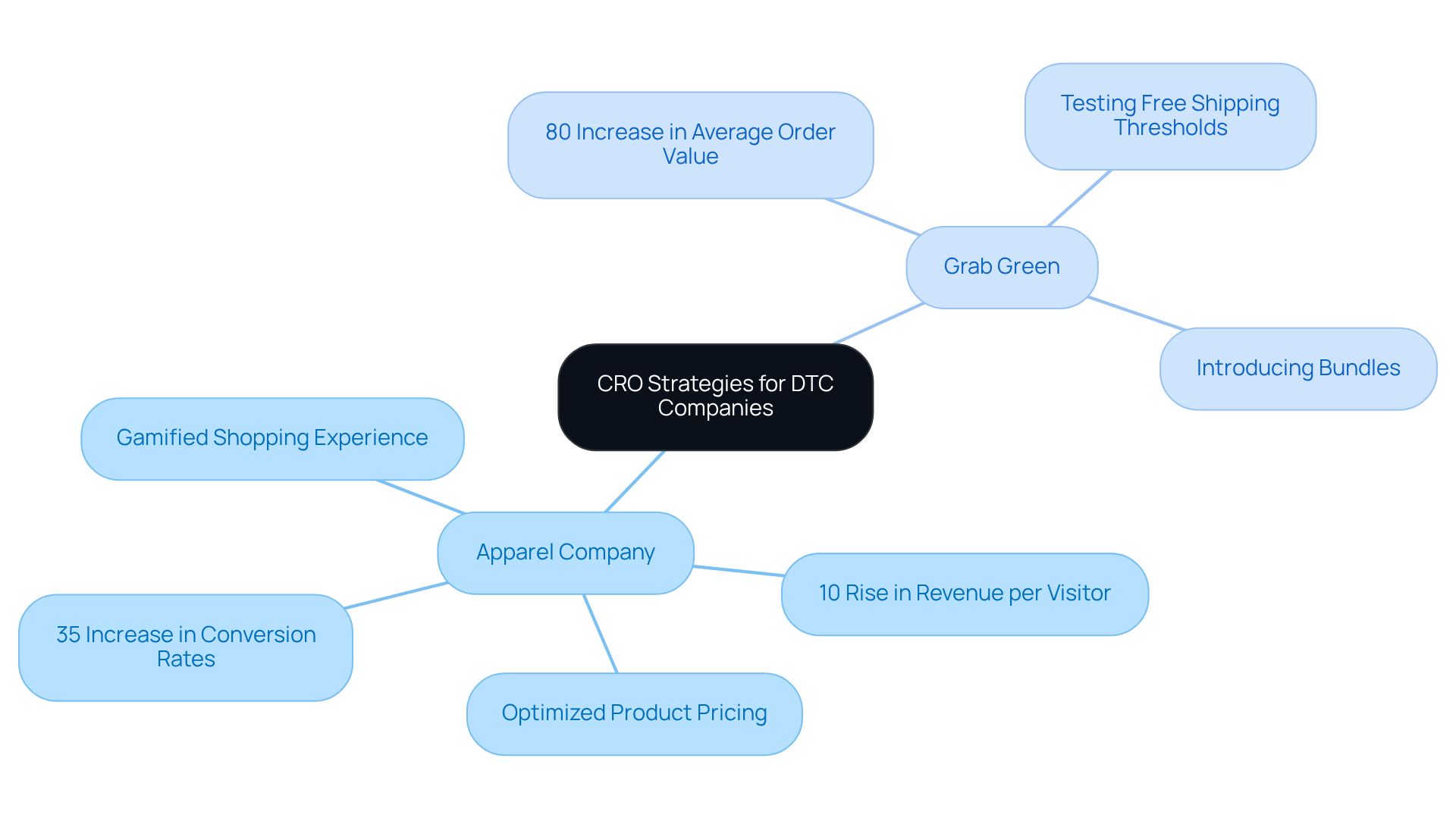
Ahrefs: Analyze Competitors' Backlinks and SEO Performance
Ahrefs empowers direct-to-consumer (DTC) companies to conduct in-depth analyses of their competitors' backlink profiles, revealing the sources of their link equity and overall SEO performance. By recognizing where rivals are obtaining their backlinks, companies can pinpoint valuable link-building opportunities and enhance their own strategies. Quality backlinks serve as endorsements from reputable websites, enhancing trustworthiness and boosting search rankings—an essential factor for effective SEO performance.
Furthermore, this tool aids in monitoring keyword rankings and content effectiveness, allowing companies to sustain a competitive advantage in the market. DTC companies can also utilize tools such as Google Analytics and Google Search Console to evaluate their current organic search performance, further refining their approaches.
As noted by SEO experts, leveraging Ahrefs for a competitors analysis example is crucial for understanding the dynamics of backlink acquisition and optimizing SEO efforts effectively. DTC companies that employ Ahrefs have reported notable enhancements in their SEO performance, with case studies indicating significant rises in organic traffic and search rankings, showcasing the tool's efficiency in refining strategies.
Additionally, Parah Group's case studies illustrate how targeted conversion rate optimization (CRO) strategies can lead to substantial revenue growth. For instance, a $30M apparel company experienced a 35% increase in conversion rates after implementing a redesigned homepage that emphasized social proof and optimized pricing. Similarly, a $15M cleaning product label improved its average order value by 80% through strategic bundling and pricing tests.
These transformational outcomes underscore the significance of combining thorough market analysis with innovative to enhance profitability for DTC companies.
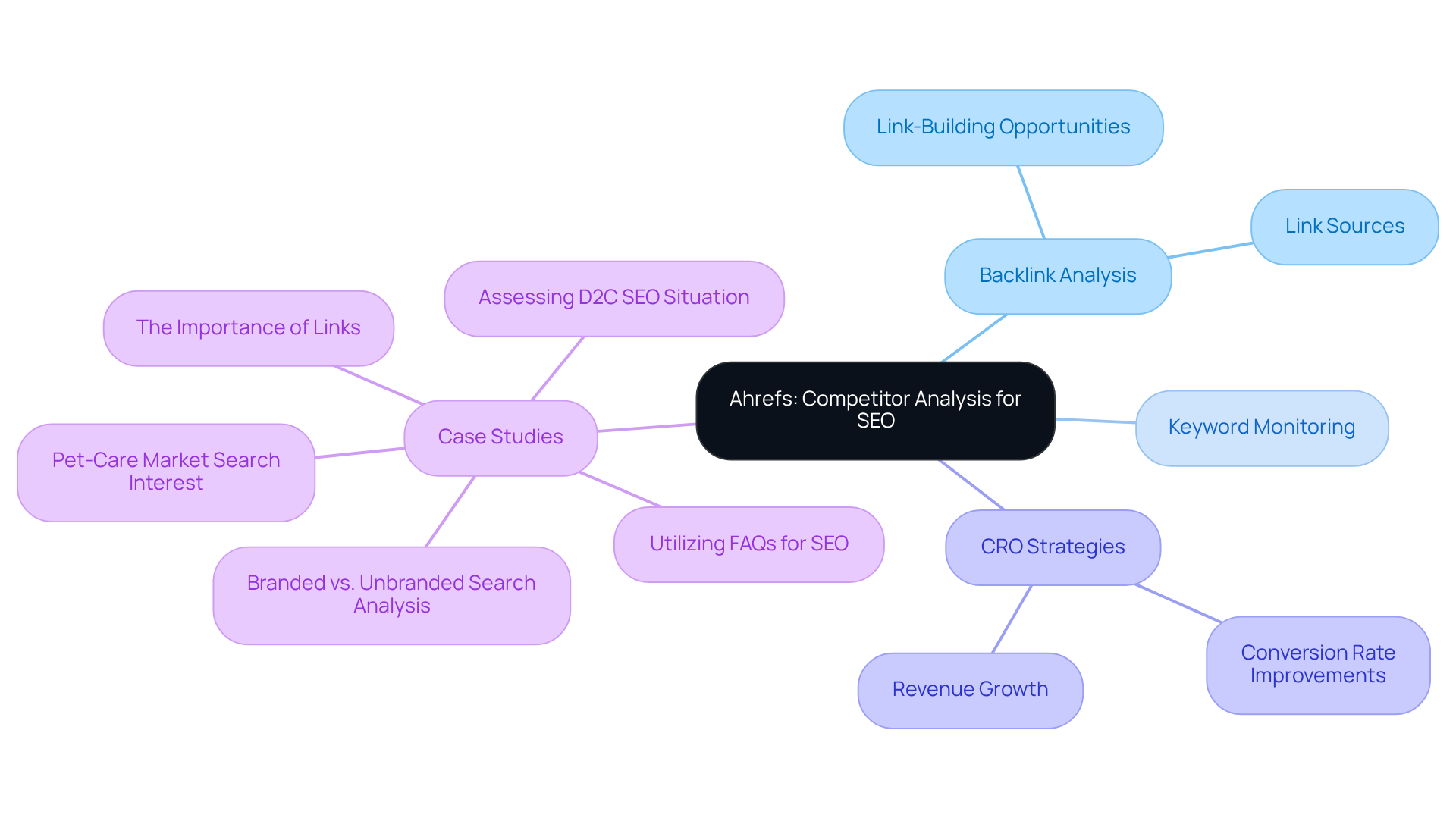
Google Ads Auction Insights: Gain Insights into Competitors' Ad Performance
Google Ads Auction Insights equips DTC companies with vital data for a competitors analysis example to evaluate their performance against others in the ad auction landscape. Key metrics, including impression share, average position, and overlap rate, serve as a comprehensive competitors analysis example for understanding a company's competitive standing. Notably, in 2025, the average impression share for DTC companies is reported to be approximately 65%, underscoring the urgent need for businesses to effectively. By harnessing these insights, companies can optimize their ad placements and bidding tactics, resulting in improved ad performance and heightened conversion rates. Digital marketing professionals assert that grasping these metrics is essential for making data-driven decisions that can profoundly influence overall campaign success.
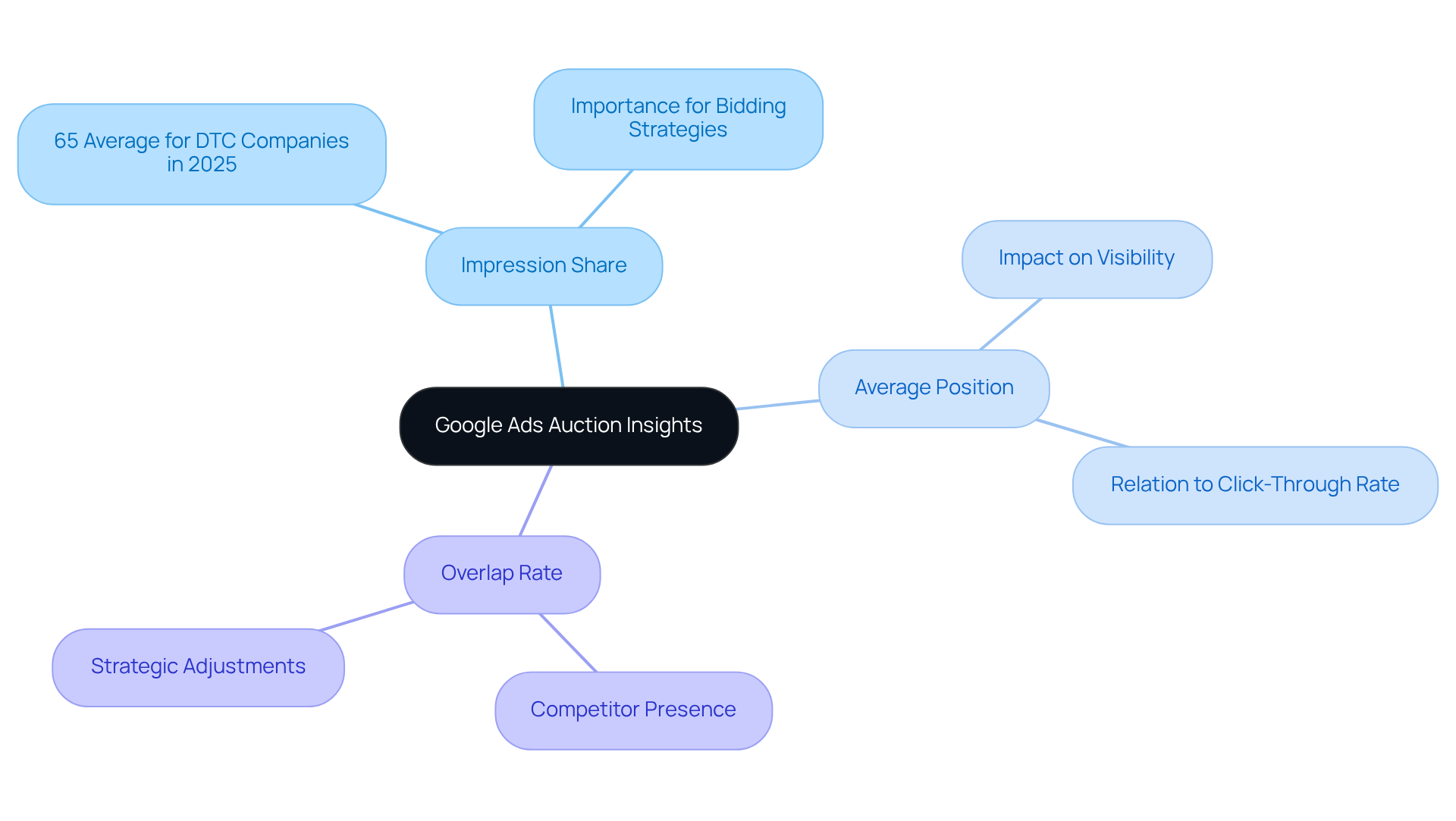
Facebook Ad Library: Monitor Competitors' Advertising Strategies
The Facebook Ad Library serves as a vital resource for DTC companies looking for a competitors analysis example to scrutinize their advertising strategies in real-time. By leveraging this centralized tool, companies can perform a competitors analysis example to examine the advertisements employed by their rivals, gaining critical insights into messaging, creative techniques, and targeting strategies. Such information is essential for shaping their own advertising campaigns, empowering them to design compelling ads that truly resonate with their target audience. Additionally, understanding competitors' ad frequency and engagement metrics can significantly enhance social media strategies.
For instance, case studies from Parah Group reveal that companies implementing strategic adjustments—such as optimizing product pricing and integrating gamified elements—have witnessed conversion rates soar by up to 35% and average order values increase by 10%. A comprehensive study conducted by Metricool, which evaluated 211,929 marketing campaigns, further underscores that companies utilizing a competitors analysis example to harness insights from competitor ads experienced a marked rise in engagement rates. This highlights the importance of in refining advertising strategies. As one expert aptly noted, "Analyzing competitor ads is one of the most powerful ways to refine your own marketing strategy."
Moreover, companies must remain vigilant regarding ethical considerations when assessing competitor advertisements, ensuring they uphold originality and comply with data privacy regulations. By harnessing the knowledge gained from the Facebook Ad Library and scrutinizing successful case studies, DTC companies can enhance their advertising efficacy and drive revenue growth, even in a challenging market.
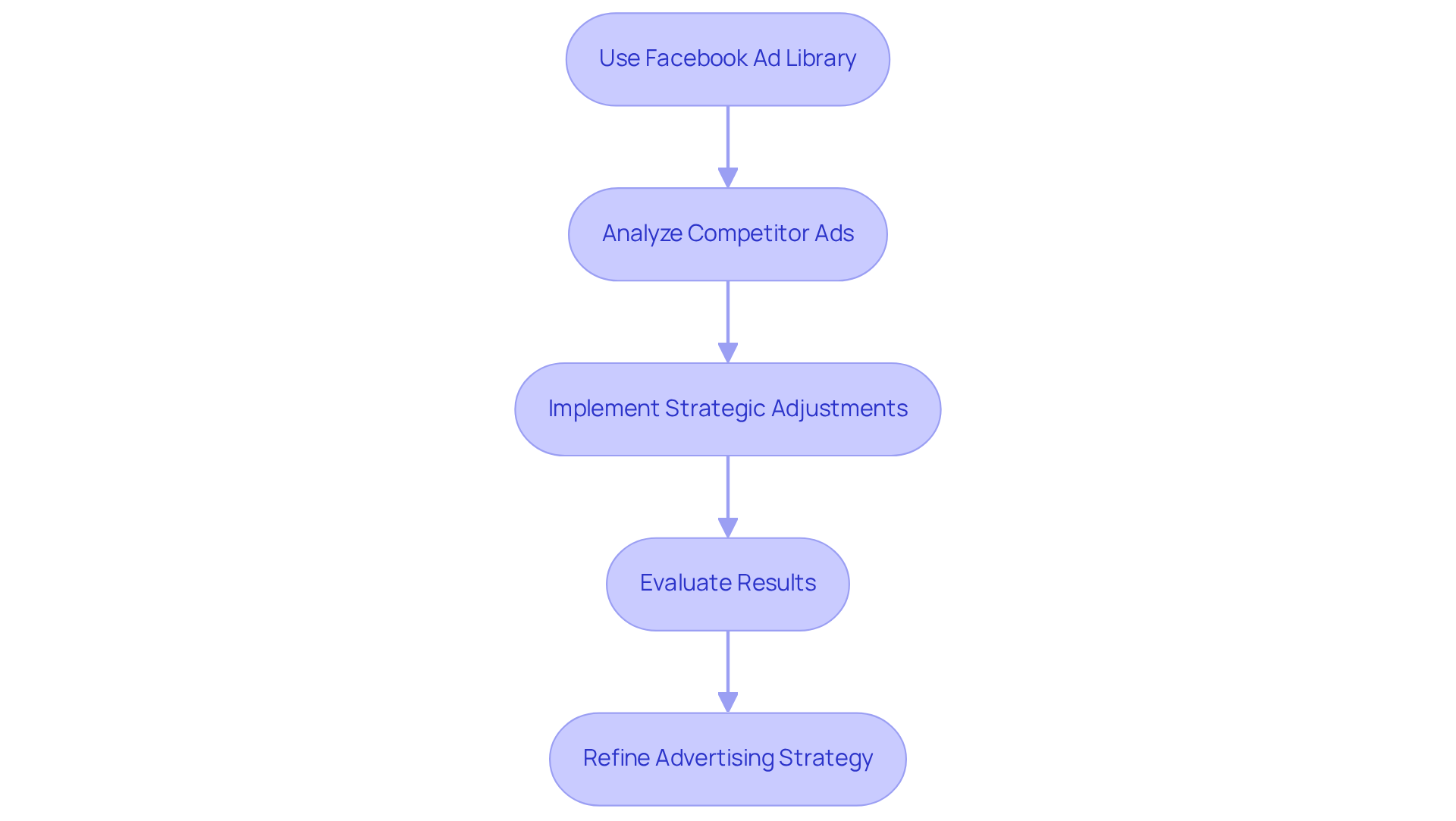
CXL: Expert Guidance on Conducting Competitive Analysis
CXL empowers DTC companies with expert guidance on conducting efficient market analysis. Their extensive resources—comprising articles, courses, and webinars—provide a thorough competitors analysis example by exploring best practices and advanced techniques. By leveraging CXL's insights, companies can enhance their analytical capabilities and adopt proven strategies as a competitors analysis example in their efforts. This commitment to continuous learning ensures that organizations remain agile and responsive to evolving market dynamics.
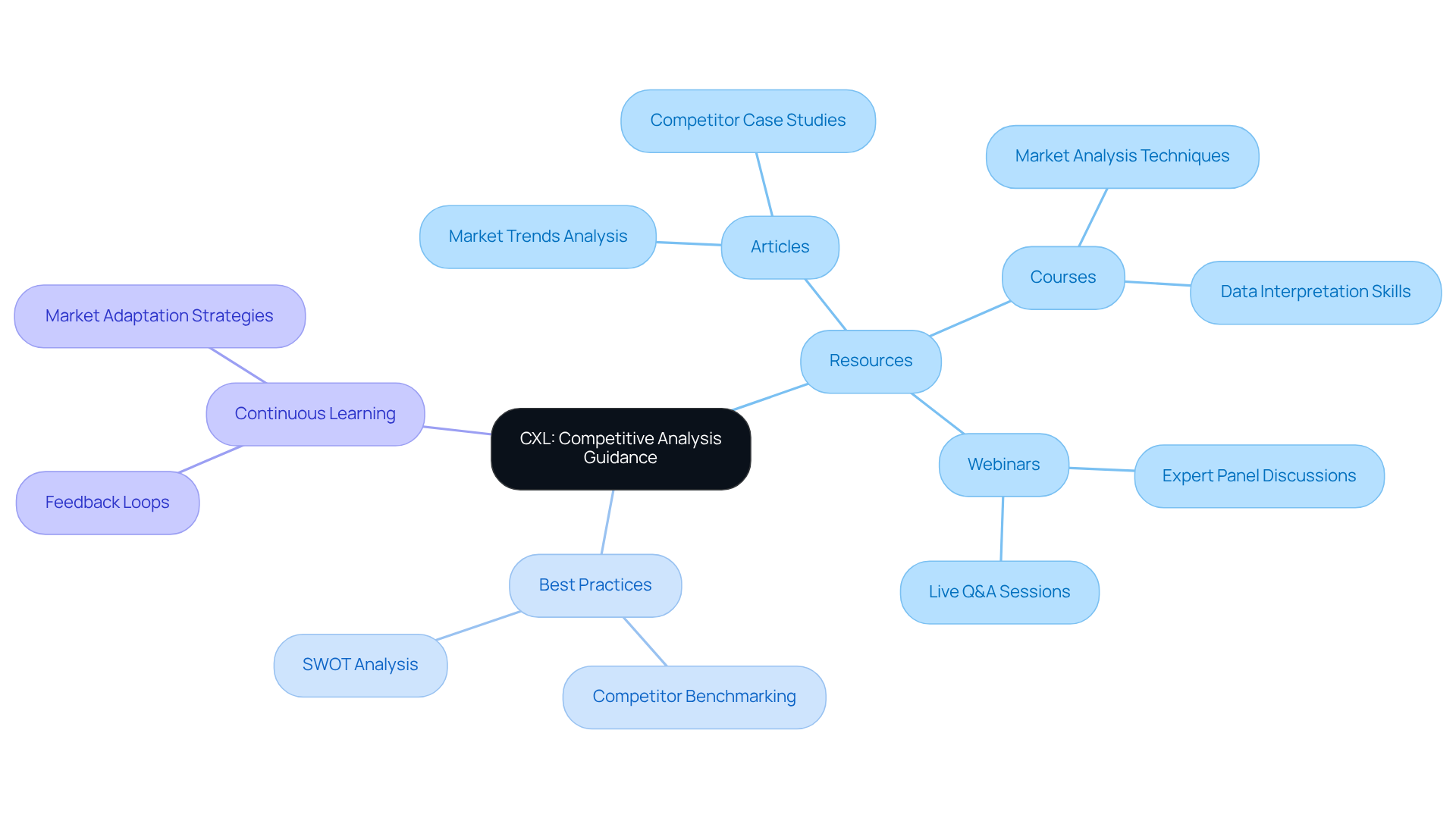
Digital Marketing Institute: Learn the Importance of Competitive Analysis
An effective marketing strategy, particularly for direct-to-consumer (DTC) companies, relies on a competitors analysis example as a cornerstone. Understanding the empowers these companies to pinpoint their strengths, weaknesses, opportunities, and threats. This critical insight is essential for devising informed strategies that not only improve market positioning but also foster sustainable growth.
Companies that actively engage in market analysis can uncover industry gaps, enabling them to tailor their products to meet consumer demands more effectively. As the DTC model continues to evolve, leveraging insights from market analysis becomes increasingly vital for companies seeking to refine their marketing strategies and capitalize on emerging opportunities.
Industry leaders emphasize that a meticulously executed market analysis can lead to substantial improvements in customer retention and overall profitability, underscoring its significance in the DTC arena.
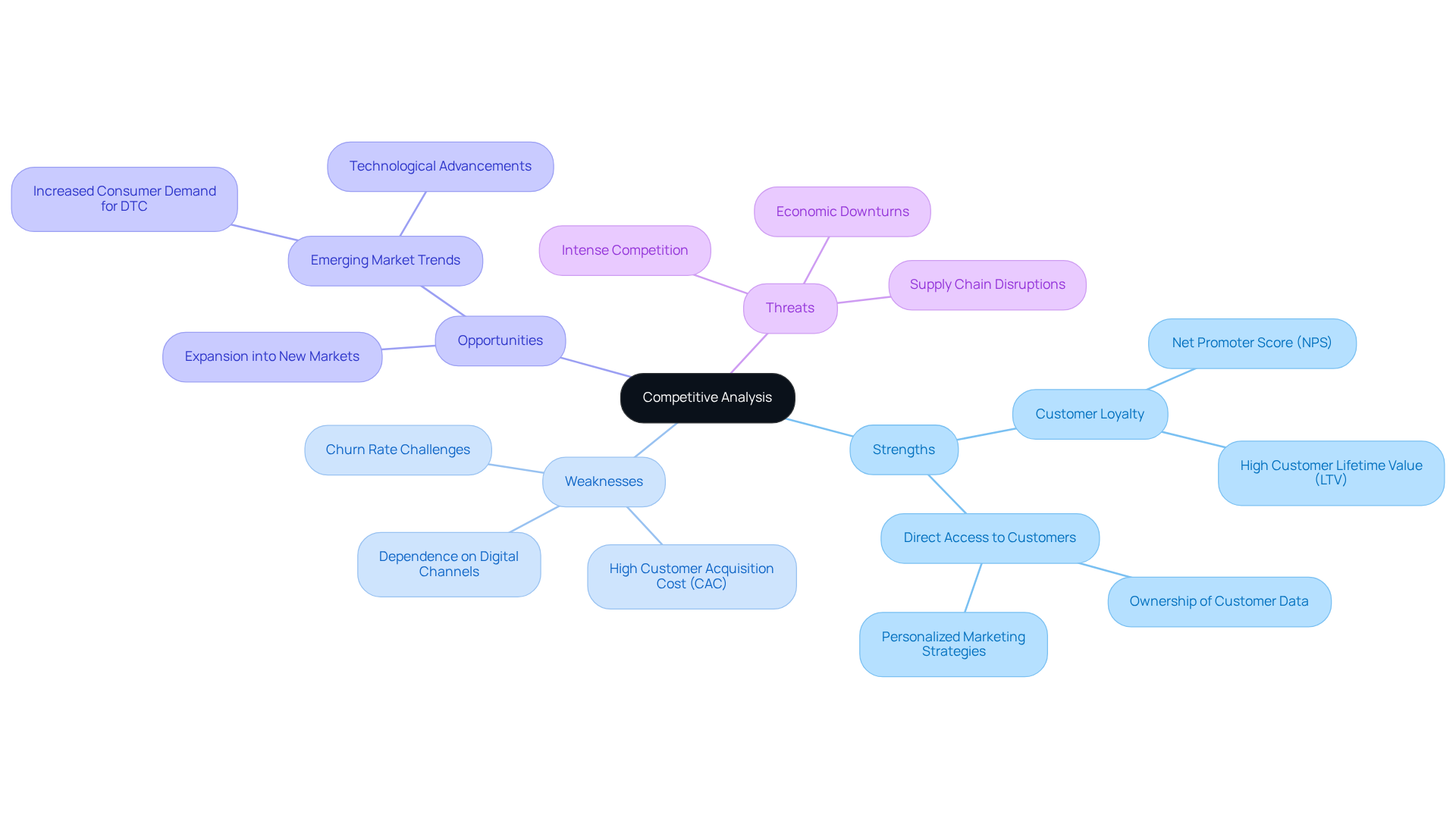
Kompyte: Real-Time Competitive Intelligence for DTC Brands
Kompyte empowers DTC companies with real-time market insights, enabling them to observe rivals' actions and industry changes as they occur. This tool delivers into rivals' product launches, pricing changes, and marketing efforts, allowing companies to respond swiftly to shifts in the market environment. By leveraging Kompyte's features, DTC companies can adopt a proactive approach in their marketing strategies, ensuring they remain effective and relevant in an ever-evolving market.
Marketing experts underscore the importance of flexibility in market analysis; in fact, 75% of companies assert that conducting a competitors analysis example is crucial for informed decision-making. DTC companies utilizing Kompyte have successfully adjusted their strategies in response to market changes, enhancing their overall performance and standing in the marketplace.
Furthermore, by integrating competitive intelligence with established methods for boosting conversion rates, companies can significantly increase profitability. For instance:
- A $30M clothing label achieved a 35% increase in conversion rates and a 10% rise in revenue per visitor after implementing targeted CRO techniques.
- A $15M cleaning product label enhanced its average order value by 80% through optimized pricing and bundling strategies.
These transformative results underscore the importance of merging market insights with effective CRO tactics to drive revenue growth and elevate overall profitability.
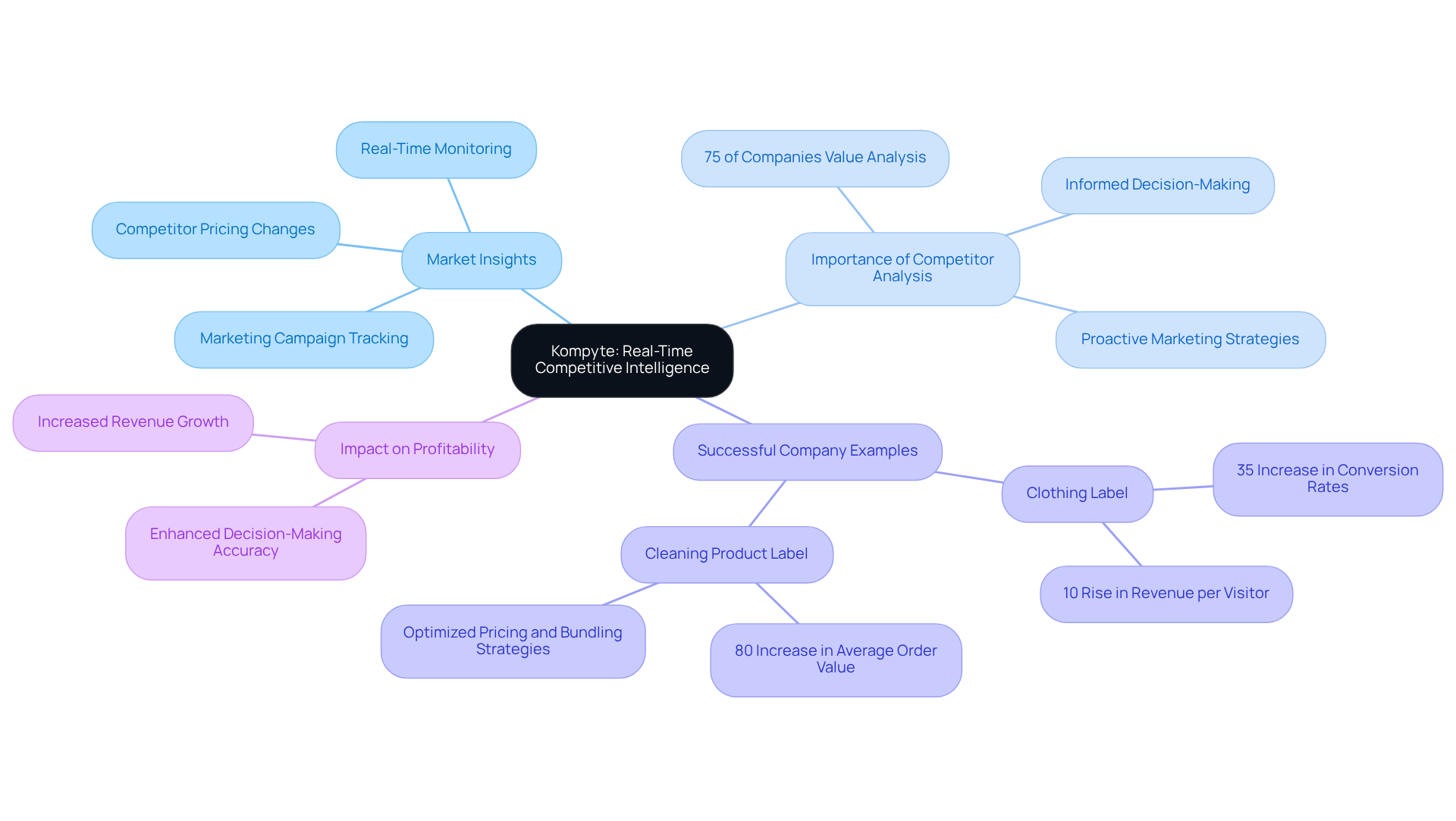
Asana: Organize and Manage Your Competitive Analysis Efforts
Asana stands as an indispensable tool for DTC companies intent on streamlining their analytical endeavors. By instituting structured tasks and timelines, these companies can engage in a comprehensive competitors analysis example and methodical analyses.
Industry reports indicate that a staggering 70% of projects falter due to inadequate planning and disorganization, underscoring the critical need for a structured approach. Asana promotes effective collaboration among team members, allowing them to monitor progress and exchange insights effortlessly.
This methodical strategy not only elevates the but also provides a solid competitors analysis example that culminates in more informed decision-making. By harnessing the capabilities of Asana, DTC brands can convert insights into actionable strategies, ultimately enhancing their performance in a competitive arena.
Furthermore, integrating both primary and secondary market research, as advocated by experts, can significantly enrich the analytical process.
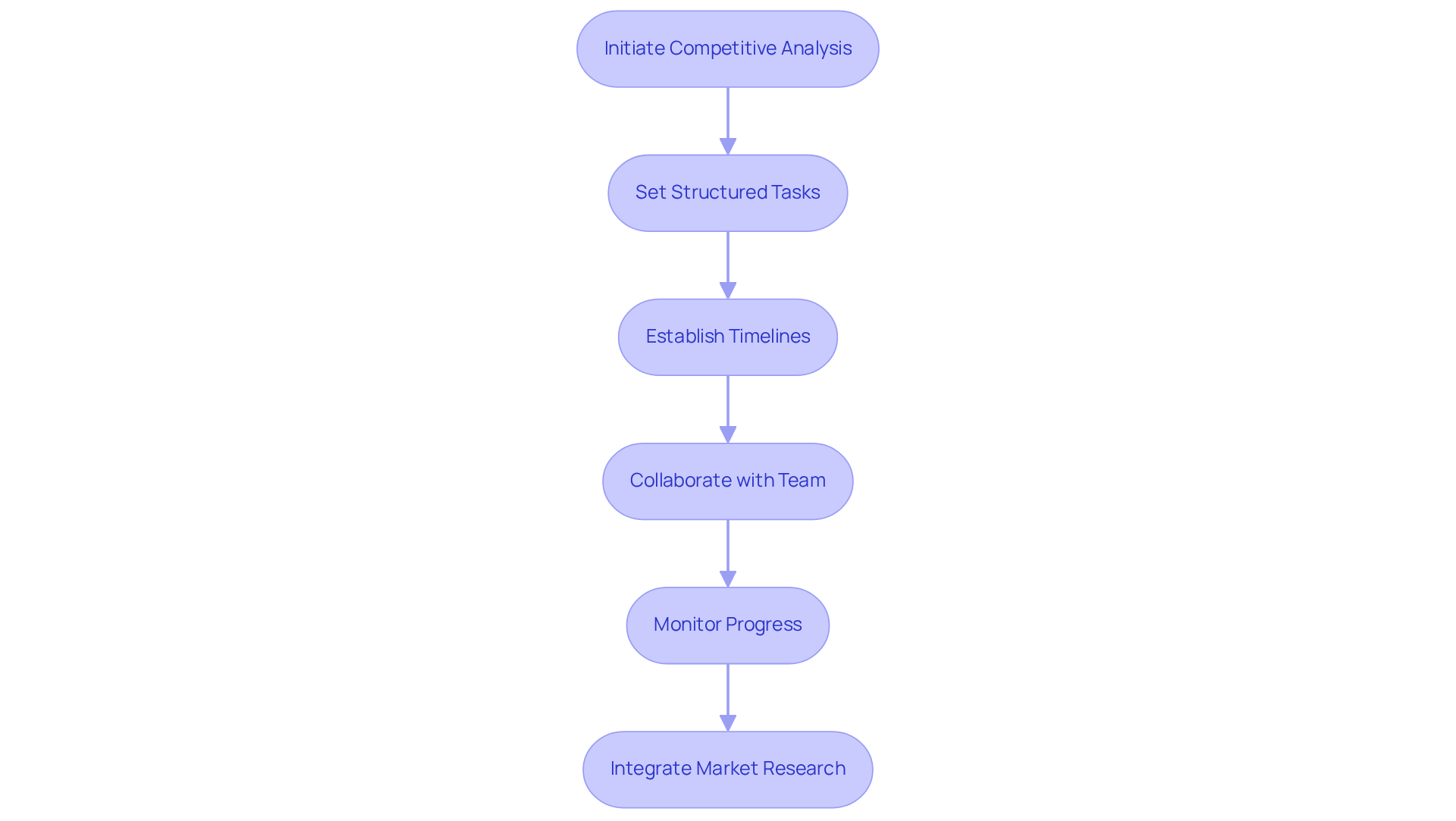
Conclusion
Effective competitor analysis stands as a cornerstone for the success of direct-to-consumer (DTC) brands, equipping them with the insights necessary to navigate a competitive landscape. By employing a range of tools and methodologies, companies can uncover valuable data on market positioning, consumer behavior, and strategic opportunities. This comprehensive approach not only enhances conversion rates and average order values but also fosters long-term growth and adaptability in an ever-evolving marketplace.
Throughout this discussion, key examples illustrate how DTC brands can leverage competitor analysis to achieve remarkable results. Consider Parah Group's transformative strategies, which led to significant increases in conversion rates and revenue. Tools like SpyFu, SEMrush, and Ahrefs provide critical insights, underscoring the necessity of a data-driven approach to understanding competitors. Furthermore, resources such as Google Ads Auction Insights and the Facebook Ad Library empower brands to refine their advertising strategies, while platforms like Asana and Kompyte facilitate organized and real-time analysis.
In conclusion, the importance of thorough competitor analysis cannot be overstated. DTC brands that actively engage in this practice are better positioned to identify gaps in the market, tailor their offerings to meet consumer demands, and ultimately drive profitability. As the landscape continues to shift, embracing these insights and methodologies will be crucial for brands aiming to maintain a competitive edge and achieve sustainable success.
Frequently Asked Questions
What services does Parah Group provide for DTC brands?
Parah Group offers comprehensive competitor analysis services designed for DTC companies, utilizing data-informed insights and consumer psychology principles to enhance market navigation, positioning, and growth opportunities.
How does Parah Group's approach improve conversion rates?
Their multifaceted approach includes user session recordings, competitor benchmarking, and continuous A/B testing, which optimize various aspects of a company's strategy, leading to significant enhancements in conversion rates and average order values.
Can you provide examples of successful outcomes from Parah Group's services?
Yes, a $30M apparel company saw a 35% increase in conversion rates and a 10% rise in revenue per visitor after implementing strategies such as homepage redesigns and optimized pricing. Similarly, Grab Green, a $15M cleaning product company, increased their average order value by 80% through strategic pricing and bundling.
What tools are recommended for conducting competitor analysis?
Tools like SEMrush and SimilarWeb are essential for real-time competition analysis, helping brands make informed decisions within their competitor analysis framework.
Why is ongoing competitor analysis important for DTC companies?
Regular updates and continuous competitor analysis are crucial for maintaining a competitive edge, enabling companies to make smarter, data-backed decisions that positively impact return on ad spend (ROAS), customer acquisition cost (CAC), and sustainable growth.
How does SpyFu assist DTC companies in their competitor analysis?
SpyFu provides insights into competitors' PPC strategies, revealing targeted keywords and advertisements, which allows DTC companies to refine their PPC campaigns for better performance and cost reduction.
What are some key case studies demonstrating the effectiveness of Conversion Rate Optimization (CRO)?
One example is a $30M clothing firm that increased conversion rates by 35% through homepage redesigns focused on social proof. Another is a $15M cleaning product brand that achieved an 80% increase in average order value by implementing product bundles and free shipping thresholds.
FAQs











